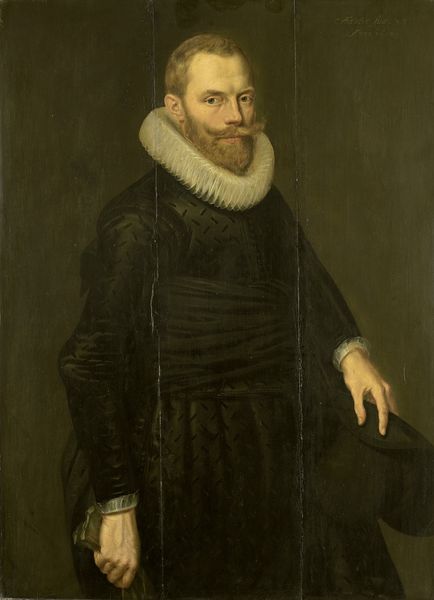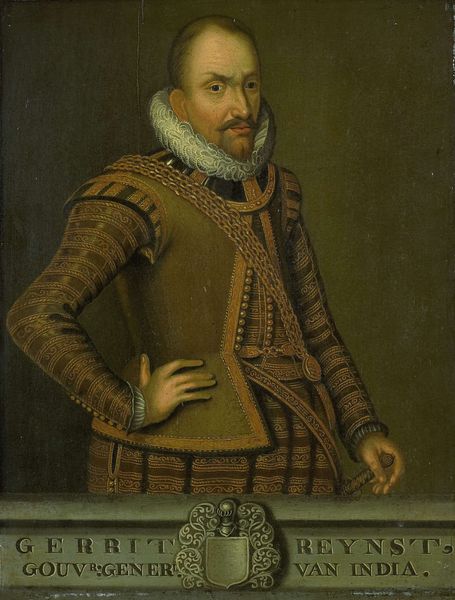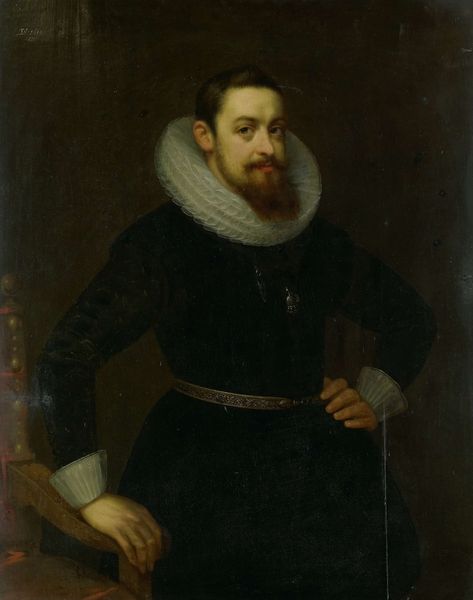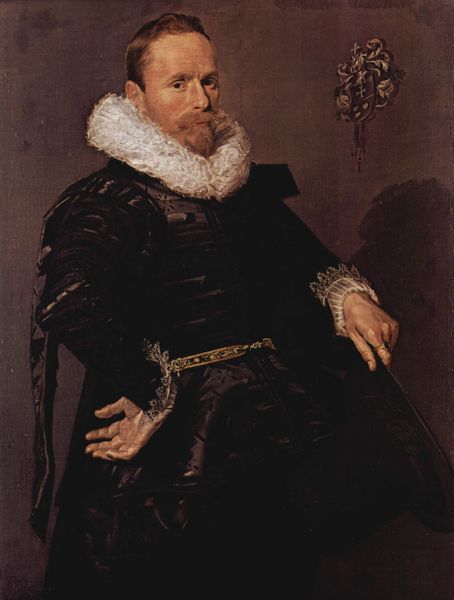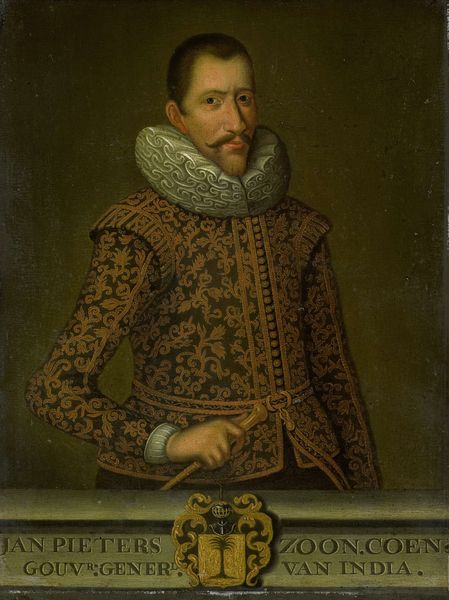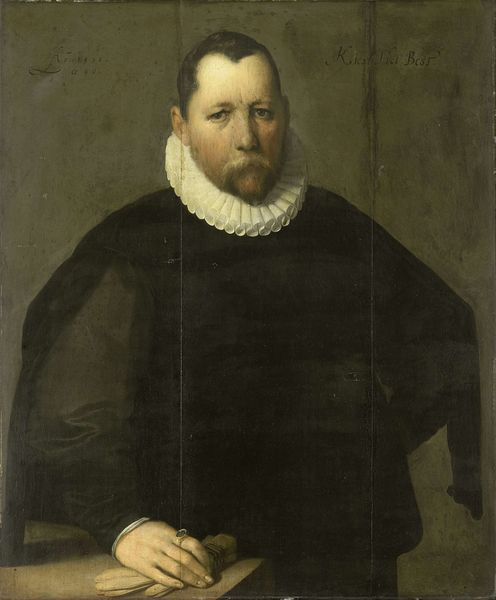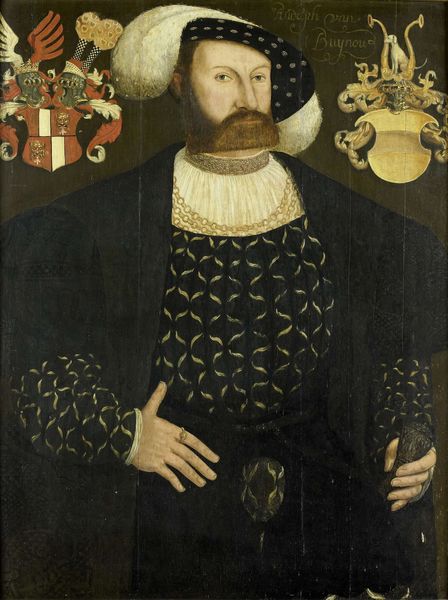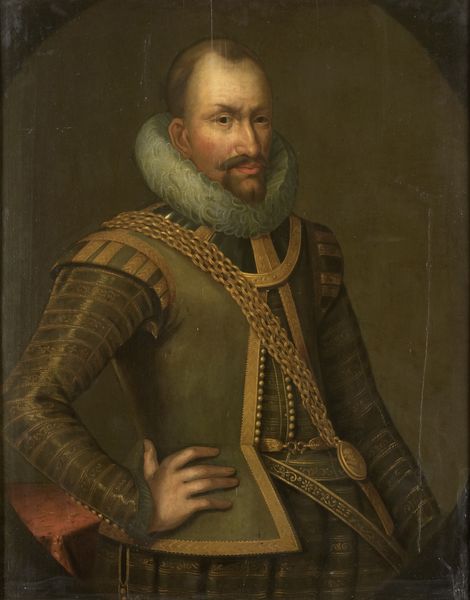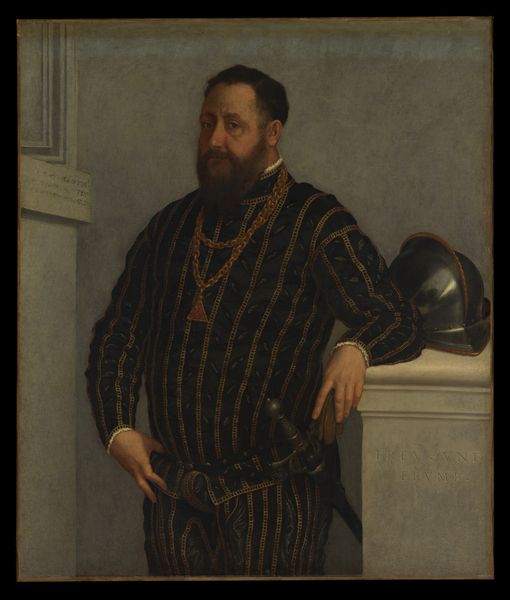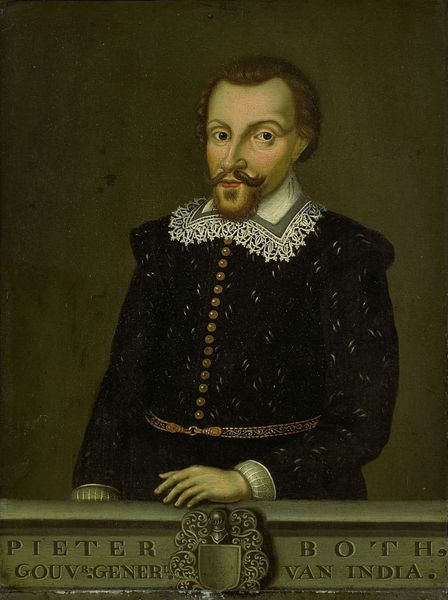
painting, oil-paint
#
portrait
#
portrait
#
painting
#
oil-paint
#
mannerism
#
figuration
#
history-painting
#
academic-art
#
realism
Dimensions: 115.6 × 85.2 cm (45 1/2 × 33 9/16 in.)
Copyright: Public Domain
Curator: This oil painting, simply titled "Portrait of a Man," dates back to sometime between 1565 and 1570, created by an anonymous artist. It currently resides here at the Art Institute of Chicago. Editor: There's an air of quiet power about this fellow. The dark palette certainly contributes, along with that very composed pose and…intense gaze. He definitely gives off a "don't mess with me" vibe. Curator: The artist certainly emphasizes details to portray social standing. Look at the elaborate fur cloak, the ornate hilt of his sword, and the meticulous ruff around his neck—all visual indicators of wealth and status during that period. Each element symbolically represents a certain type of power and control. Editor: Exactly, this image clearly upholds a rigid social hierarchy, presenting him as someone who benefits from it. Who gets to commission a portrait like this? Who is consciously excluded, or even oppressed, so that this kind of wealth can be displayed? Curator: While such overt display does suggest power and influence, these early modern portraits also explore more complex themes related to identity. In portraiture, posture, expression, and accessories form a vocabulary. And that language reflects a careful presentation of self to the world, designed to project certain ideals. The painting also speaks to the culture’s aspiration towards learning. The man is educated, but not necessarily aristocratic by birth. The picture may hint at self-fashioned status and ambition through a self-acquired mastery of rhetorical self-representation. Editor: I see your point. I can’t help wondering, however, about the untold stories obscured by portraits like this one. Whose voices and experiences were deliberately left out of the historical record in favor of celebrating figures like this? What impact does the historical imbalance still have today? Curator: It's certainly crucial to acknowledge those gaps. Ultimately, for me, this piece still emphasizes humanity, self-expression and continuity between that period and our own. I appreciate your bringing to the forefront ways we can broaden the narratives. Editor: Agreed. Examining those visual symbols that persist can help reveal the ongoing legacies of power and privilege. This helps me see art, not as simply a product of the past but as something intertwined with the present and its pressing need for social justice.
Comments
No comments
Be the first to comment and join the conversation on the ultimate creative platform.

